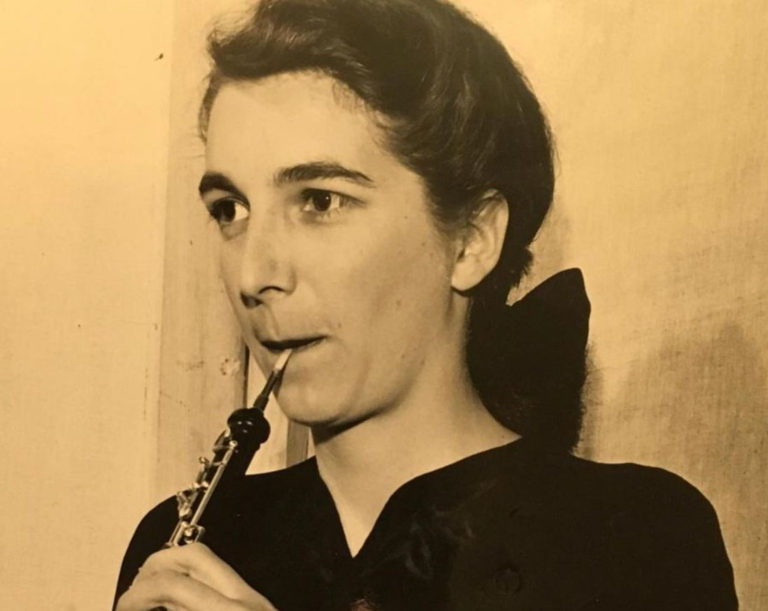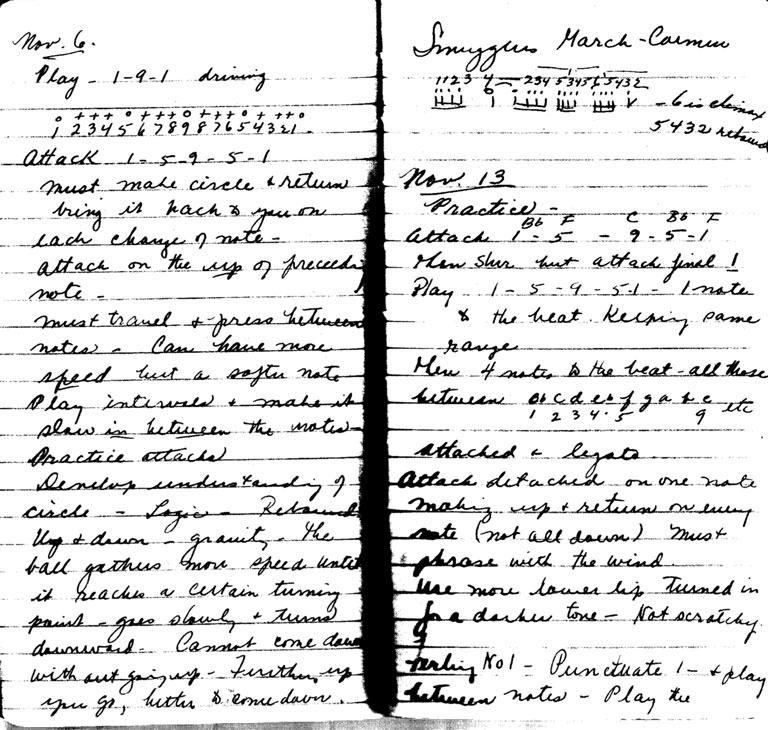Before beginning oboe lessons with Marcel Tabuteau in January of 1943, Laila Storch already had a good working knowledge of the pedagogic literature of the instrument as it was known in the late 1930s and early 40s. This included entirety of the Barret Method for Oboe, all 12 Sellner Duos, and a number of solos including the Haydn Oboe Concerto which she had memorized. Her teacher, Julien Shanis, had been among Tabuteau’s first students, having taken private lessons with the master in 1923. During the years 1939 through 1942 when Laila was his student, Shanis was a member of the San Francisco Symphony Orchestra.
The source of the above information is derived from a notebook of Laila’s lessons with Julien Shanis. And when she began to take lessons with Tabuteau in the winter of 1943, this detailed information continued through this book and two additional notebooks (see the full set of original notes: Book 1, Book 2, Book 3). Indeed, these are very valuable resources for understanding exactly what Laila was learning.
Right at the outset of Laila’s lessons, Tabuteau realized that, although Laila had ‘fingers’ on her open-holed Loree, she had not yet figured out how to make the instrument sing. So, Tabuteau had his work cut out for him. And it is here that we see his famous number system in full bloom, together with his system of ups and downs.
The first set of lessons, taken in the winter and spring of 1943 at the Ludlow Building Studio, led to Laila’s acceptance at the Curtis Institute of Music in the fall of that same year. Within two years Laila was awarded a diploma by Curtis and, in addition, she was presented with the opportunity for a year of post-graduate study with Tabuteau.
But, Laila was not finished studying with Tabuteau, for as her notebooks demonstrate, she returned in the fall of 1946 for a number of lessons before leaving for Kansas City and the English horn position in the Kansas City Philharmonic which covered two seasons 1946-47 and 1947-48.
Then something very unusual occurred: Laila had the opportunity to audition for the position of principal oboist of the Houston Symphony Orchestra. This was at a time when orchestral playing was considered men’s work. Needless to say, a certain amount of pressure was on Laila to prove herself, so in the spring of 1948 at the end of the Kansas City Philharmonic’s short season, she returned for lessons with Tabuteau. It was at this time that he included lessons on reed-making, right down to detailed measurements for a gouging machine to be made for Laila by Ernest Graf.
Soon Laila won the Houston position. By the fall of 1948 she crammed, taking lessons practically every other day, as Tabuteau instructed her in the secrets of playing the big orchestral solos. Not only that, but Laila returned twice for single lessons with Tabuteau at his retreat in La Lécque, France during the summers of 1950 and 1952.
So, dear readers, let us return to the Philadelphia of the early 1940s, when a young, talented woman traveled by bus across the breadth of the United Stated from San Francisco to study with the renowned oboist, Marcel Tabuteau, with the hope that someday she would become the principal oboist of a symphony orchestra.
Charles-David Lehrer
Thousand Oaks, CA, March 2022


